Vous trouverez ci-dessous de brèves informations pour le Calculateur de débit FB1100. Ce document contient les instructions de sécurité et les conditions d'utilisation spécifiques pour le calculateur de débit Emerson FB1100. Il mentionne des aspects importants comme les conditions d'utilisation pour les environnements ATEX, les spécifications techniques, l'installation, le câblage, la mise à la terre, ainsi que la configuration du dispositif. Ce document fait référence aux manuels d'instructions et au guide de démarrage rapide pour des informations plus détaillées. Il fournit également des consignes de sécurité cruciales, notamment celles concernant l'installation dans des zones dangereuses et la manipulation de l'appareil.
Vous trouverez ci-dessous de brèves informations pour le Calculateur de débit FB1100. Ce document contient les instructions de sécurité et les conditions d'utilisation spécifiques pour le calculateur de débit Emerson FB1100. Il mentionne des aspects importants comme les conditions d'utilisation pour les environnements ATEX, les spécifications techniques, l'installation, le câblage, la mise à la terre, ainsi que la configuration du dispositif. Ce document fait référence aux manuels d'instructions et au guide de démarrage rapide pour des informations plus détaillées. Il fournit également des consignes de sécurité cruciales, notamment celles concernant l'installation dans des zones dangereuses et la manipulation de l'appareil.




















-
 1
1
-
 2
2
-
 3
3
-
 4
4
-
 5
5
-
 6
6
-
 7
7
-
 8
8
-
 9
9
-
 10
10
-
 11
11
-
 12
12
-
 13
13
-
 14
14
-
 15
15
-
 16
16
-
 17
17
-
 18
18
-
 19
19
-
 20
20
-
 21
21
-
 22
22
-
 23
23
-
 24
24
-
 25
25
-
 26
26
-
 27
27
-
 28
28
-
 29
29
-
 30
30
-
 31
31
-
 32
32
-
 33
33
-
 34
34
-
 35
35
-
 36
36
-
 37
37
-
 38
38
-
 39
39
-
 40
40
-
 41
41
-
 42
42
-
 43
43
-
 44
44
-
 45
45
-
 46
46
-
 47
47
-
 48
48
-
 49
49
Vous trouverez ci-dessous de brèves informations pour le Calculateur de débit FB1100. Ce document contient les instructions de sécurité et les conditions d'utilisation spécifiques pour le calculateur de débit Emerson FB1100. Il mentionne des aspects importants comme les conditions d'utilisation pour les environnements ATEX, les spécifications techniques, l'installation, le câblage, la mise à la terre, ainsi que la configuration du dispositif. Ce document fait référence aux manuels d'instructions et au guide de démarrage rapide pour des informations plus détaillées. Il fournit également des consignes de sécurité cruciales, notamment celles concernant l'installation dans des zones dangereuses et la manipulation de l'appareil.
dans d''autres langues
- italiano: Emerson FB1100 Istruzioni per l'uso
- español: Emerson FB1100 Instrucciones de operación
- Deutsch: Emerson FB1100 Bedienungsanleitung
- Nederlands: Emerson FB1100 Handleiding
- português: Emerson FB1100 Instruções de operação
Documents connexes
Autres documents
-
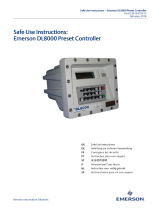 Remote Automation Solutions DL8000 Preset Controller Mode d'emploi
Remote Automation Solutions DL8000 Preset Controller Mode d'emploi
-
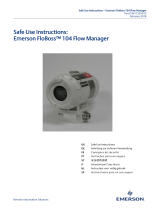 Remote Automation Solutions FloBoss 104 Flow Manager Mode d'emploi
Remote Automation Solutions FloBoss 104 Flow Manager Mode d'emploi
-
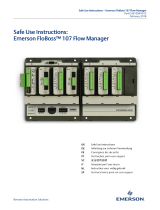 Remote Automation Solutions FloBoss 107 Mode d'emploi
Remote Automation Solutions FloBoss 107 Mode d'emploi
-
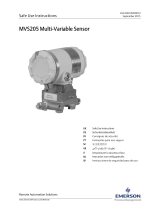 Remote Automation Solutions MVS205 Multi-Variable Sensor Mode d'emploi
Remote Automation Solutions MVS205 Multi-Variable Sensor Mode d'emploi
-
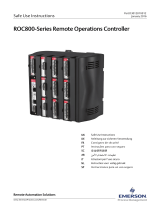 Remote Automation Solutions ROC800-Series Remote Mode d'emploi
Remote Automation Solutions ROC800-Series Remote Mode d'emploi
-
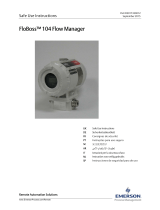 Remote Automation Solutions FloBoss 104 Flow Manager Mode d'emploi
Remote Automation Solutions FloBoss 104 Flow Manager Mode d'emploi
-
Asco Series 327 Le manuel du propriétaire
-
Asco Series PV Solenoid Valve MXX ATEX II Le manuel du propriétaire























































